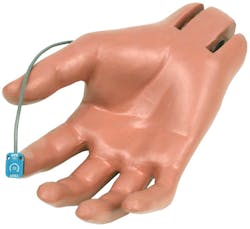EE's June Technology Insights: Sensors open new vistas in electronics
Whether they are analog or digital, sensors are playing increasingly important roles in electronics. Some of the more commonly used sensors include touch, proximity, temperature, infrared, ultrasonic, pressure, level, and smoke. As technology progresses, sensors are taking on new attributes, such as the ability to “see” firefighters in burning buildings, “smell” and “taste”, and much more. And if you want to learn about the latest cutting-edge sensor technology, stop by the Sensors Expo during June in San Jose, where Evaluation Engineering will be in attendance.
Groundbreaking smart sensor “tastes” and “sniffs”
Researchers from the Technion-Israel Institute of Technology in Haifa, Israel, have developed an innovative sensing systemcapable of identifying and distinguishing different stimuli. The system is based on origami (the art of paper folding) combined with ink developed at Technion. The research was led by Professor Hossam Haick of the Technion’s Wolfson Faculty of Chemical Engineering and the Russell Berrie Nanotechnology Institute, and Dr. Min Zhang, an associate professor at East China Normal University. The challenge facing the researchers was to develop a single system sensitive enough to identify and distinguish among different stimuli. They say they developed a solution inspired by nature. The system developed by Haick and Zhang, called “origami hierarchical sensor array”, is an integrated array of grouped sensors written on the target object in conductive ink that the two scientists developed.1
Sensor ‘sees’ firefighters in burning buildings
McMaster University researchers, in partnership with other universities, have created a motion-powered, fireproof sensor that can track the locations of firefighters, steelworkers, miners, and others who work in high-risk environments where they are not always visible. The low-cost sensor is about the size of a coin and can easily be inserted into the sole of a boot or under the arm of a jacket—wherever motion creates a pattern of constant contact and release to generate the power the sensor needs to operate. The key material in the sensor—a new carbon aerogel nanocomposite—is fireproof, and the device never needs charging from a power source.2
High-performance angular rate sensor
The miniature ARS PRO angular rate sensor by DTS is designed to capture precision angular rate data, even in high-energy environments including blast protection and crash testing. The silicon-based MEMS resonating gyro is packaged in a ruggedSensors Expo set for June 25-27 in San Jose
Sensors Expo & Conference is the industry's largest event dedicated to sensors, connectivity, and systems. More than 7,000 engineers and engineering professionals are expected June 25-27 at the McEnery Convention Center in San Jose, CA and discover the latest products and technologies from suppliers that are continuously transforming the industry through demand and innovation. There are preconference symposia, conference technical sessions across 10 updated tracks, keynote presentations, networking events, exhibits, and more.
Report: Wearable materials market $2.9B by 2023
The wearable materials market size is projected to grow from $1.5 billion in 2018 to $2.9 billion by 2023, at a CAGR of 15.0% between 2018 and 2023, according to a recent research report published by MarketsandMarkets,. Consumer demand for sophisticated devices, the growing popularity of connected devices, and increasing disposable income are considered driving forces in the market. Volatility in raw material prices and lack of durable, supple materials restrain the growth of the wearable materials market.3


